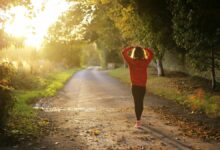First Sunstroke Death Report From Odisha As Temperature Exceeds 44°C; Self-Protection Strategies
A 62-year-old man passed away from sunstroke in the Balasore district of Odisha, despite the state experiencing extreme weather conditions over the last several days. News sources state that the highest temperature ever recorded in Boudh town was 44.3 degrees Celsius.

Information on three occurrences of purported heat-related deaths has been obtained so far. There has only been one verified fatality from the Balasore area so far. The concerned Collectors are looking into the remaining cases, according to a Special Relief Commission office official.
Niranjan Mishra, the director of public health, reports that at least 71 persons have been hospitalized to various state hospitals after becoming unwell as a result of the very high temperatures.
Thirty-five of them were from Sundargarh, and seven from Angul and Mayurbhanj.
A heat wave: what is it?
Physicians define a heat wave as occurring when a station’s maximum temperature hits at least 40 degrees Celsius in plain areas and at least 30 degrees Celsius in mountainous areas.
Heat cramps, heat exhaustion, heatstroke, and hyperthermia are just a few of the ailments that may arise from your body’s inability to control its temperature when it experiences rapid increases in heat gain brought on by exposure to hotter-than-average temperatures.
It’s important to diagnose these heat-related disorders as soon as possible to avoid major repercussions.
Several signs of a heatwave
The primary indicator of heatstroke is a core body temperature measured with a rectal thermometer of 104 F or above. Others include:
Modified emotional state or conduct
Heatstroke may cause confusion, agitation, slurred speech, irritability, delirium, seizures, and coma.
Change in perspiration
Your skin will feel hot and dry to the touch if you have heatstroke due to hot weather.
But in cases of heatstroke brought on by intense physical activity, your skin may feel somewhat damp or dry.
vomiting and nausea
You could feel nauseous or throw up.
renewed epidermis
As your body temperature rises, your skin may become red.
Breathing quickly
You could start breathing quickly and shallowly.
heart rate accelerating
Because heat stress puts a great deal of strain on your heart to assist cool your body, your pulse may rise noticeably.
Headache
It might be a pounding headache.
Strategies to fight the heat wave
It’s simple for your body to overheat or get dehydrated in intense heat. There are a few simple strategies to fight the heat wave, according to Dr. Divya Gopal of Internal Medicine at Sir HN Reliance Hospital and Research Centre. These strategies include:
Drink lots of water or vegetable or fruit juice each day to avoid being dehydrated. “During periods of extreme heat and humidity, it may be advisable to substitute an electrolyte-rich sports drink for water because heat-related illness can also result from salt depletion,” Dr. Divya said.
When it’s hot outside, eat lighter meals. Fruits that are rich in water content, such as lettuce, strawberries, oranges, and cucumbers, will keep you cool and hydrated.
It’s generally advised that people who exercise at a moderate to high intensity consume 17 to 20 ounces of liquids two to three hours before they start. Just before doing out, think about consuming an additional eight ounces of water or sports drink.
Even if you don’t feel thirsty, you should drink an additional seven to ten ounces of water every 20 minutes while exercising, the speaker said. Avoid liquids that include alcohol or caffeine since they may increase heat exhaustion and lead you to lose more fluids. Consult your physician prior to increasing your liquid consumption if you have a problem with fluid retention, kidney, liver, or cardiac problems.
When it is hot outside, carry and apply a cooling spray.
To keep your house cool during the warmest hours of the day, keep your drapes or blinds closed.
Never leave elderly persons, children, or pets in a vehicle. Within minutes, the temperature inside a parked automobile may double.
Look for places with air conditioning and try to have a cold shower at least twice a day. Put on loose, porous, light-colored, and lightweight cotton clothing. When venturing outside in the sun, make sure you have comfortable shoes, a hat, an umbrella, safety goggles, and scarves on.
Plan your activities for the cooler part of the day and stay out of the heat and exercise.
Watch out for symptoms of dehydration right once, such as headache, dizziness, dry mouth, and disorientation, and get medical attention right away.






